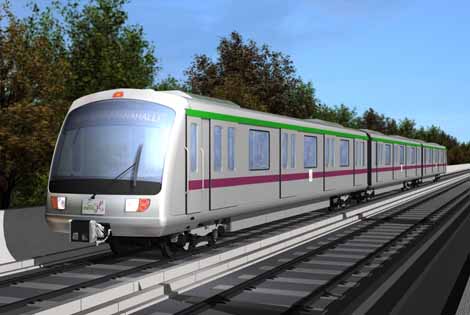Chandigarh, the beautiful city that serves as the capital of two states – Punjab and Haryana, has been rapidly growing and expanding in recent years. With a population of over one million people, commuting in the city can be a daunting task, especially during peak hours. The good news is that the city is all set to introduce its own metro system, which is expected to commence operations from 2024.
The metro project in Chandigarh has been in the works for some time now, with the city authorities and stakeholders working hard to ensure that the project is executed smoothly and efficiently. The project has been divided into three phases, with the first phase expected to be completed by 2024.
The first phase of the Chandigarh metro will consist of two corridors – one from Sector 21 to Panchkula and the other from Sector 17 to Mohali. These corridors will cover a distance of around 37 kilometers and will have a total of 30 stations. The metro system is expected to provide commuters with a fast, reliable, and affordable mode of transport, which is much needed in a city like Chandigarh.
The metro system in Chandigarh will be state-of-the-art and equipped with the latest technology. The trains will be air-conditioned and fully automated, with high-speed connectivity and real-time passenger information systems. The metro stations will also be equipped with modern amenities, such as escalators, elevators, and parking facilities.
The introduction of the metro system in Chandigarh is expected to have a significant impact on the city’s traffic congestion and pollution levels. With more people opting for the metro system, there will be fewer cars on the roads, which will result in reduced traffic jams and improved air quality. The metro system will also provide a safer mode of transport for commuters, especially women, who often face safety issues while using public transport.
The metro system in Chandigarh is also expected to give a boost to the city’s economy. The metro project is expected to generate employment opportunities and boost real estate development along the metro corridors. It is also expected to enhance the city’s connectivity and make it a more attractive destination for businesses and investors.







